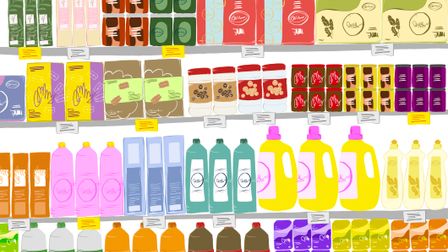Why brands can’t afford to ignore 24 million LGBTQ+ consumers
Mark Tevis, EVP of Sales and Partnerships at broadcaster Revry argues that, despite challenging times for DEI initiatives, brands that shun diverse audiences in their marketing will be losing out.
There was a time in the not-so-distant past when most marketers and advertisers thought that targeting LGBTQ+ consumers was a liability, not a growth opportunity. As it turns out, even in 2025, many brands still operate under this false, fear-based assumption – and it has and will continue to cost them.
Amid a sociopolitical climate that’s never been more polarised, companies have made the colossal mistake of ignoring LGBTQ+ consumers to avoid alienating conservative consumers or miffing wary stakeholders. In some cases, brands have courted the LGBTQ+ demo only to retract campaigns following backlash from a tiny but loud minority – leading to much greater controversy and reputational damage.
LGBTQ+ people are the fastest-growing segment in the US when it comes to purchasing power.
This isn’t just a cynical strategy. It’s bad for business, and hobbles any brand’s ability to grow, survive and connect in a volatile market. Here’s why:
The LGBTQ+ segment is growing exponentially, with skyrocketing spending power
As reported by Gallup in February 2025, 9.3 per cent of the US adult population identified as LGBTQ+. That’s about 24 million people, or the populations of New York, Chicago and Los Angeles combined. This percentage has roughly doubled since 2020, nearly tripled since 2012, and is expected to increase even more rapidly over the next decade.
Not all conservatives oppose protections or dignity for loved ones in the LGBTQ+ community — far from it.
Most crucially, with one in five members of Gen Z identifying as queer, LGBTQ+ people are the fastest-growing segment in the US when it comes to purchasing power. 24 million consumers with explosive buying power? That’s not a niche demographic to sidestep; it’s lost money that, for a publicly traded company, will in fact sorely disappoint shareholder expectations.

With one in five members of Gen Z in the US identifying as queer, this is not a niche demographic to ignore.
The conservative-leaning population is stagnant
According to Gallup and others, 37 per cent of US adults recently described their political ideology as “conservative” or “very conservative.” That figure has remained relatively stable, hovering around 38 per cent, since 1992. And, regardless of public perception, not all conservatives oppose protections or dignity for loved ones in the LGBTQ+ community — far from it.
Brands that jettisoned LGBTQ+-friendly campaigns misjudged the general population of LGBTQ+ allies.
According to Brookings, a 2023 poll found that, despite a dip, 59 per cent of republicans/conservatives still supported the LGBTQ+ community. How can a brand grow by catering to a fringe demographic that hasn’t grown in 30-plus years while neglecting a lucrative segment that’s consistently growing?
Don’t become a case study
One of the most well-known recent brand failures in this arena concerns Target, which scaled back its Pride merchandise the last few years after conservative boycotts and backlash. Things got worse back in January, when the store dramatically scaled back their DEI initiatives and policies — a huge blow to Black Americans as well as the LGBTQ+ community. This led to more boycotts and a softening of foot traffic and stock price, its CEO acknowledged.
In this and other cases, major brands that jettisoned LGBTQ+-friendly campaigns and abandoned their LGBTQ+ audience didn't just misjudge this demographic — they misjudged the general population of LGBTQ+ allies, too. Marginalising or mistreating the LGBTQ+ population means alienating their loved ones as well. Poor leadership and kneejerk decisions led to lost dollars, and lost opportunities.
Just show up in LGBTQ+ environments and stay there year round (read: not just Pride Month).
Consumer spending is on a general downturn
Thanks to economic uncertainty, tariffs and other factors, overall US consumer growth is forecasted to weaken in 2025, and worsen further in 2026, according to Morgan Stanley Research. With existing consumer bases spending less, not more, it's crucial for all brands to branch outward and tap into newer, thriving, burgeoning, and yes, previously ignored consumer segments.

Brands cannot afford to ignore the spending power of LGBTQ+ allies.
How can brands get in front of LGBTQ+ consumers and create loyalty?
It’s simpler than you think: just show up in LGBTQ+ environments and stay there year round (read: not just Pride Month). Whether your brand operates in automotive, beauty, packaged goods, fast food or inflatable neon yoga mats, you can commit your long-term advertising and marketing dollars to dedicated LGBTQ+ organisations, for example.
As the US population becomes more diverse, there's no path for growth for brands that refuse to cater to diverse audiences.
In most cases, brands don’t need to create LGBTQ+-specific content: Consistent and continued presence in these spaces is the action that can speak the loudest. Brands create consumer loyalty with authentic, sustained connection.
Borne out by statistics and data trends, as the US population becomes more diverse, there's no path for growth for brands that refuse to cater to diverse audiences. Whether
out of fear or archaic strategy, to bypass an expanding LGBTQ+ segment in 2025 is potentially fatal business judgment — yielding lost market share, eroded consumer trust and death-by-irrelevance.
)







